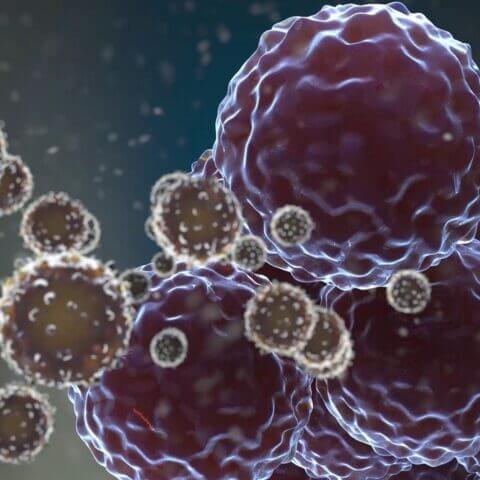When it comes to dermatologic conditions, gene therapy is still in its very early stages. However, we are seeing promising potential solutions for some rare genetic dermatology diseases, as well as ongoing research in more common skin conditions.
The success of gene-based therapies relies on three critical elements:1
- A well-defined disease gene
- A therapeutic gene
- An efficient gene delivery system, whether it is a viral or non-viral vector
In our first article, we reviewed gene transfer techniques and gene delivery systems that could potentially be used for treating dermatologic conditions. Now we turn our attention to the current state of gene therapy for dermatologic conditions.
Gene Therapy in Epidermolysis Bullosa
Currently, the greatest strides in dermatology gene therapy have been made in epidermolysis bullosa (EB). Affecting an estimated 1 in every 20,000 children born in the U.S., EB is a family of inherited blistering skin disorders associated with gene defects affecting gene expression of the basal epidermis. At least eighteen genes and 13 proteins responsible for the specific subtypes of EB have been characterized.2 3
There are three main subtypes of EB: EB simplex (EBS), junctional EB (JEB), and dystrophic EB (DEB), each of which is caused by different mutations and affects different levels of the epidermis:
- EBS is typically caused by dominant mutation in the genes encoding for keratin 5 or keratin 14, and is generally the mildest phenotype
- JEB is attributable to recessive mutation in one of three genes (LAMA1, LAMB3, and LAMC2) encoding subunits of the laminin-332 protein, which binds the surface of the skin to the underlying layers4
- DEB can be either recessive (RDEB) or dominant, and is attributable to mutation in COL7A1, the gene encoding type VII collagen
Gene therapies are being explored to address all three subtypes of EB. There are currently at least three companies investigating gene therapy approaches for RDEB in early phase clinical trials:5 6
- Krystal Biotech is studying a topical gel that uses a herpes simplex viral vector to deliver COLA7A1
- Abeona Therapeutics is using a retroviral vector to insert the COLA7A1 into keratinocytes, which are then cultured into skin grafts
- Fibrocell Science is utilizing a lentiviral vector to modify autologous fibroblasts, which are then injected intradermally
Significant clinical advances in gene therapy research have also been seen in JEB. In 2006, a group of researchers reported successful ex vivo gene therapy using genetically modified autologous skin grafts expressing LAMB3 in one patient with JEB.7 More recently, in 2015, these same researchers again cultured the epidermal stem cells of a patient and modified them with a viral vector carrying a functional version of LAMB3. These modified stem cells were grown into sheets of skin large enough to replace approximately 80% of the patient’s entire epidermis.4 NATURE By 2017, the patient’s blisters had been replaced with smooth, fully functional skin. In an article published in Nature, the researchers demonstrated that this type of long-term grafting was only possible because the genetically modified stem cells were holocones, a rare type of stem cell that can self-renew indefinitely.8
Gene Therapy in Other Skin Diseases
Melanoma. There are currently multiple clinical trials in melanoma exploring various gene therapy approaches. These approaches range from genetically modified autologous lymphocytes and adenovirus-mediated interleukin-2 intralesional injections to genetically modified autologous T cells expressing T-cell receptors against a variety of tumor antigens.5 GORELL
Other Genetic Skin Diseases. Gene therapy has also been studied in inherited skin disorders such as ichthyosis and the rare diseases pachyonychia congenita and xeroderma pigmentosum.9 10 Krystal Biotech is currently conducting a phase 1/2 clinical trial of a topical gene therapy for TGM-1 deficient autosomal recessive congenital ichthyosis.11
Wound Healing. Another area of gene therapy exploration is wound healing, a complex, multifactorial process. Animal studies of gene therapy for wound healing have focused on boosting growth factors, such as vascular endothelial growth factor and epidermal growth factor, which are known to assist with wound healing.12
The Promise of Gene Therapy
In addition to the millions of Americans living with dermatologic conditions, thousands of children are born every year with genetic skin disorders. With continuing advances in gene therapy, we may one day be able to prevent the formation of pathological skin lesions, rather than having to treat or cure them.
1 Shaaban D, Neinaa Y. Gene therapy: Its applications in dermatology. GJDV. 2017;24(1).
2 Marinkovich MP. Inherited epidermolysis bullosa. In: Fitzpatrick’s dermatology in general medicine (eds. Goldsmith LA, et al.), 2012, pp. 649-665. McGraw Hill, New York.
3 Has C, et al. Integrin a3 mutations with kidney, lung, and skin disease. N Engl J Med. 2012;366:1508-1514.
4 Nature. Change the genes to fix the skin. Available at https://www.nature.com/articles/d41586-018-07640-2. Accessed March 2, 2020.
5 ClinicalTrials.gov. Search for epidermolysis bullosa gene transfer, March 18, 2020.
6 Evaluate. Gene therapies go skin deep to tackle epidermolysis bullosa, March 11, 2019. Available at https://www.evaluate.com/vantage/articles/analysis/spotlight/gene-therapies-go-skin-deep-tackle-epidermolysis-bullosa. Accessed March 18, 2020.
7 Mavilio F, et al. Correction of junctional epidermolysis bullosa by transplantation of genetically modified epidermal stem cells. Nature Med. 2006:12:1397-1402.
8 Hirsch T, et al. Regeneration of the entire human epidermis using transgenic stem cells. Nature. 2017;552:327-332.
9 Leachman S, et al. First-in-human mutation-targeted siRNA phase Ib trial of an inherited skin disorder. Mol Ther. 2010;18:442-446.
10 Warrick E, et al. Preclinical corrective gene transfer in xeroderma pigmentosum human skin stem cells. Mol Ther. 2012;20:798-807.
11 ClinicalTrials.gov. Search for ichthyosis gene therapy, March 18, 2020.
12 Gorell E, et al. Gene Therapy for Skin Disease. Cold Spring Harb Perspect Med. 2014;4:49-51

 Perspectives Blog
Perspectives Blog 


